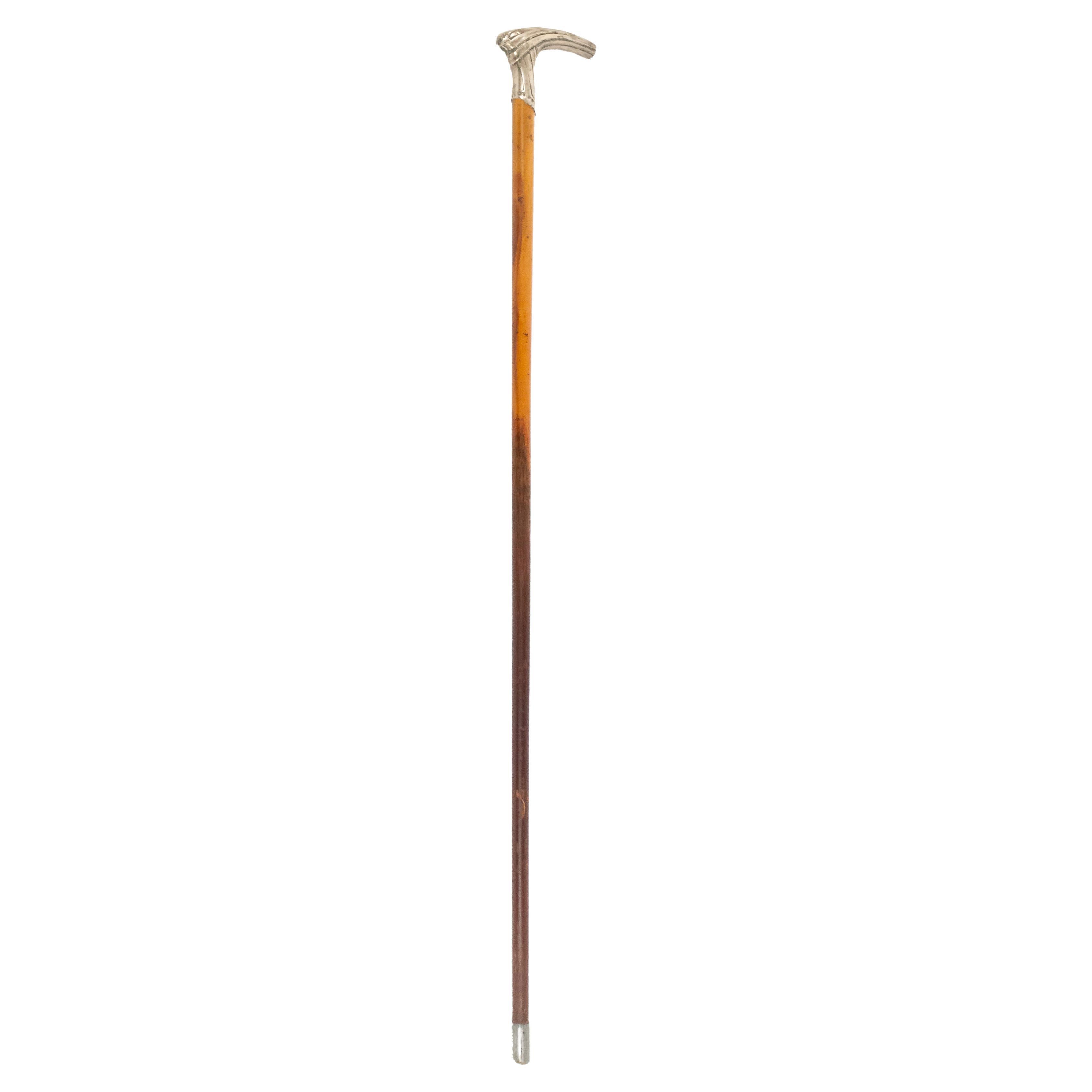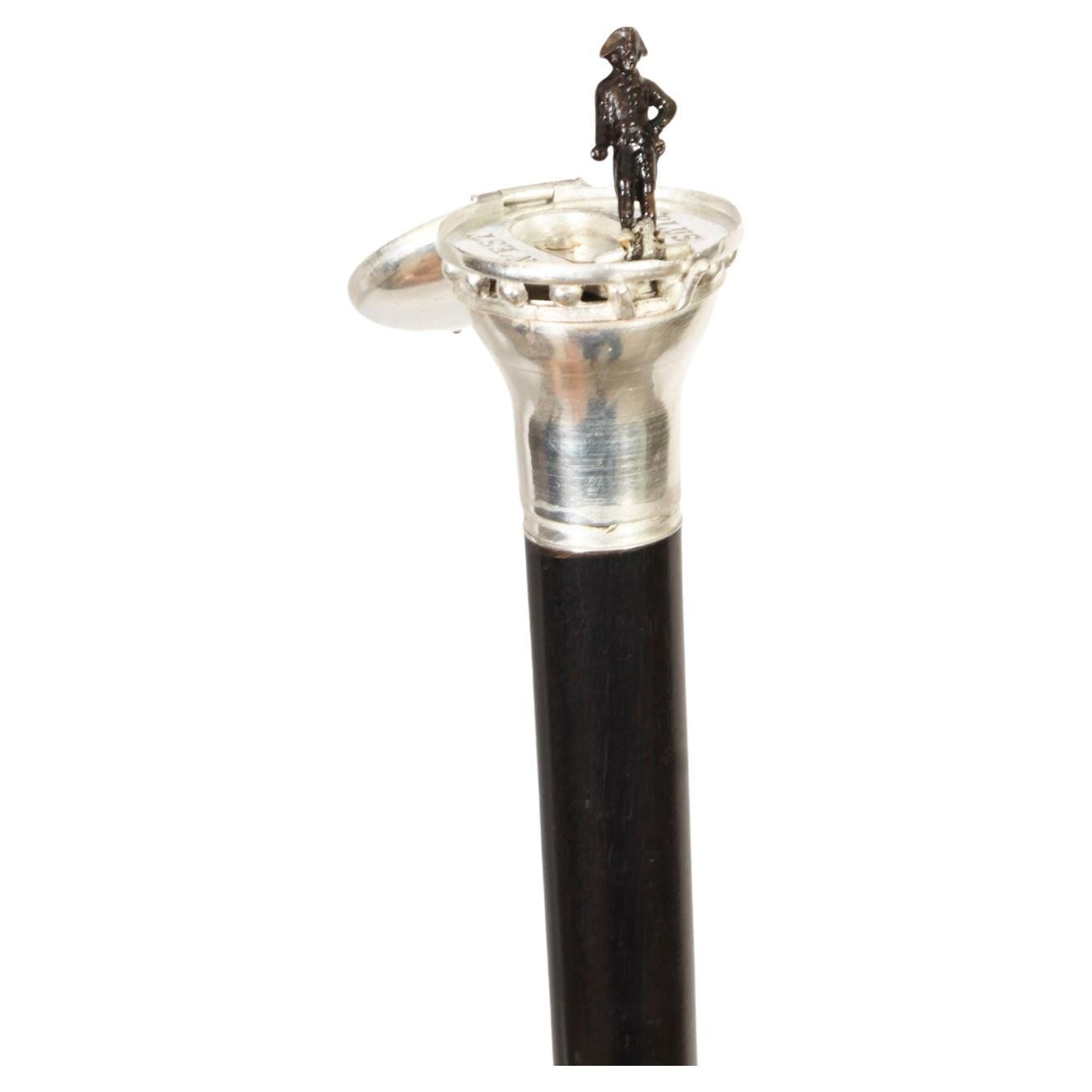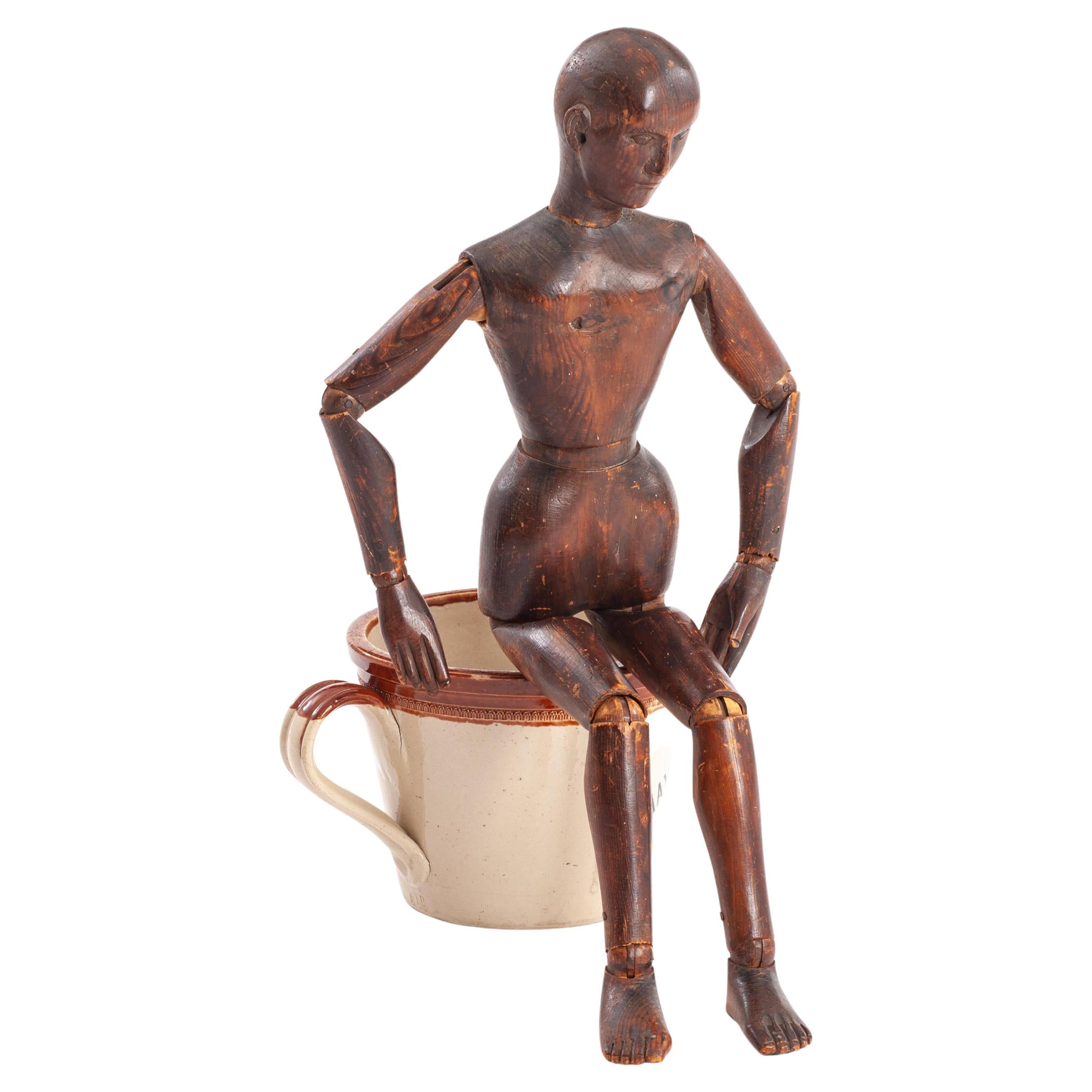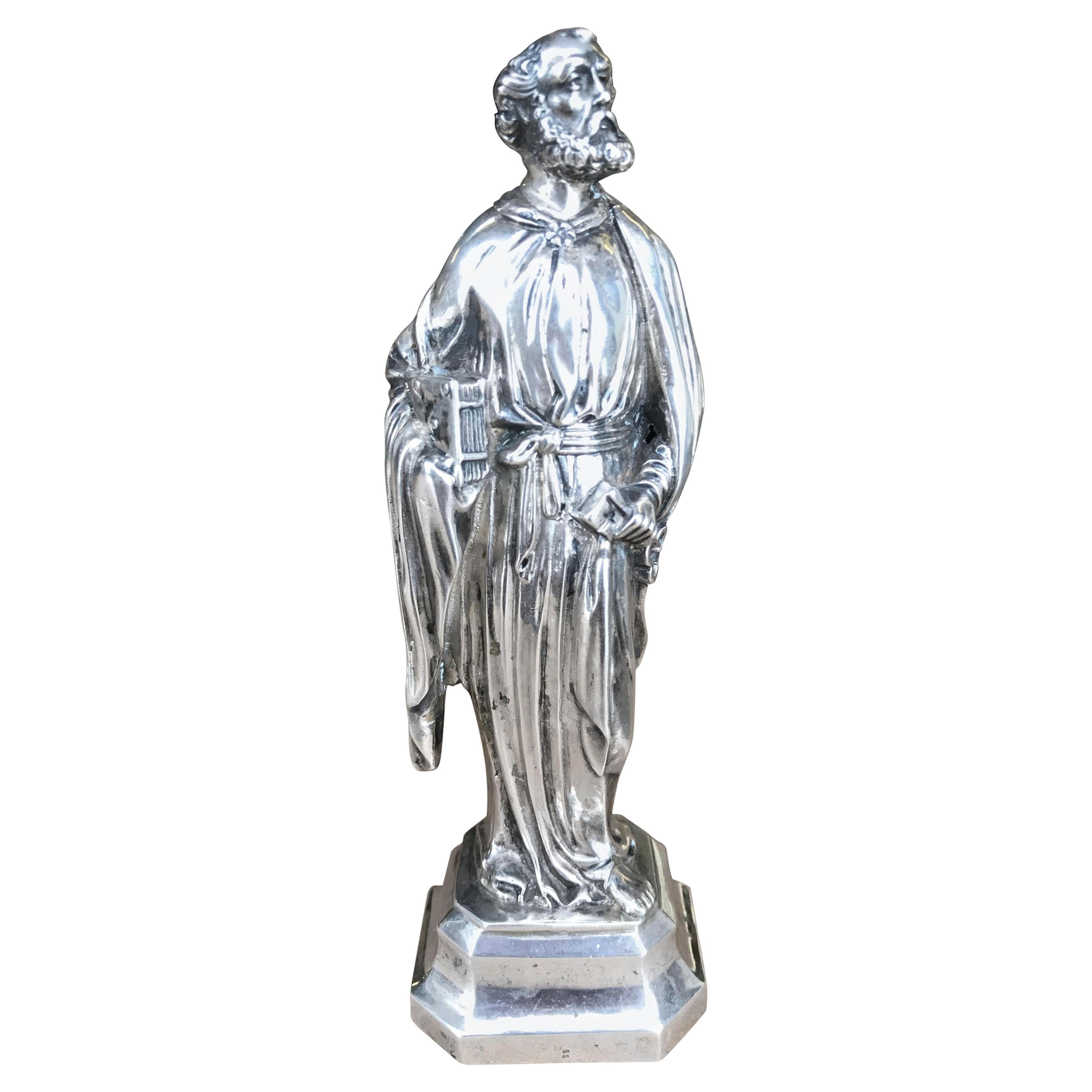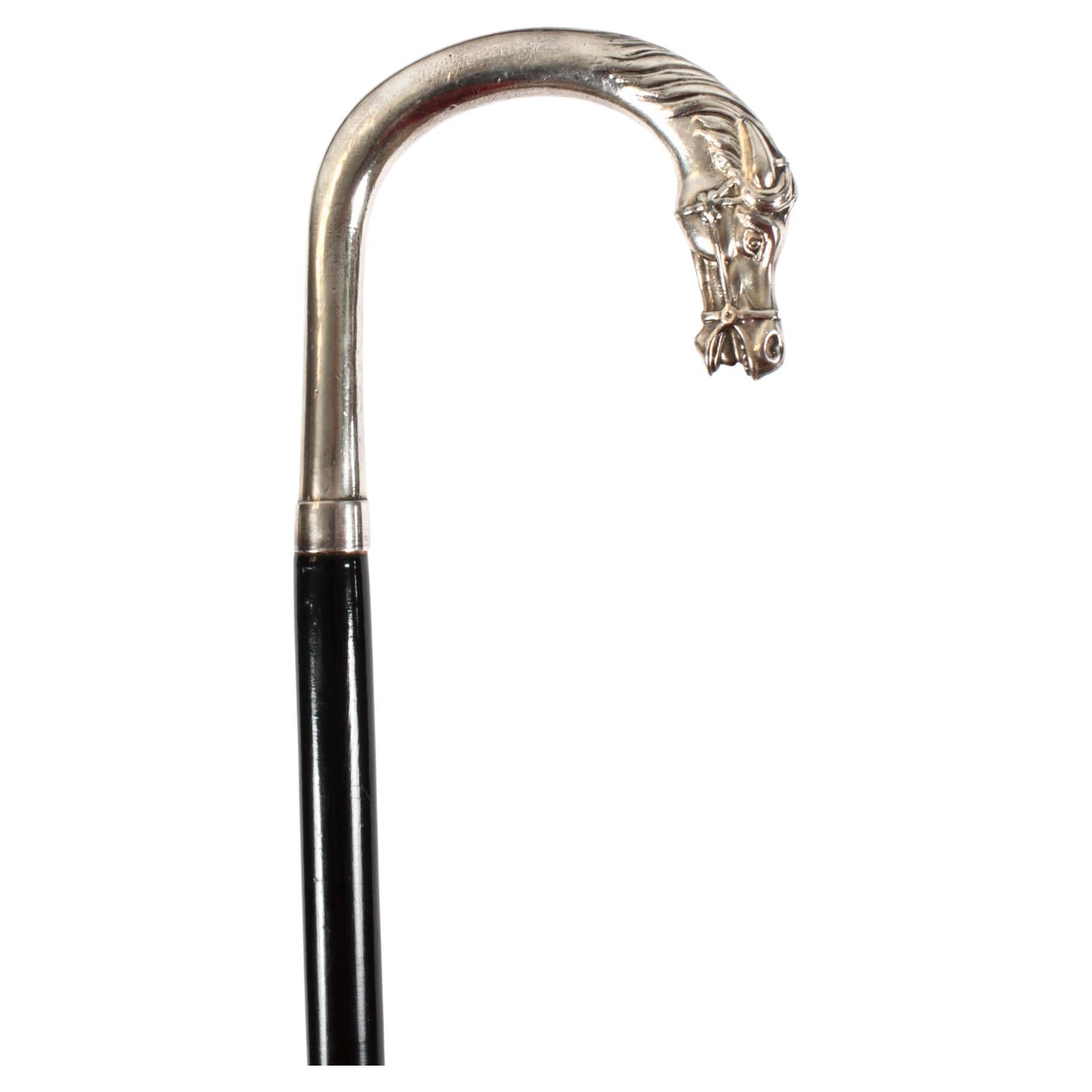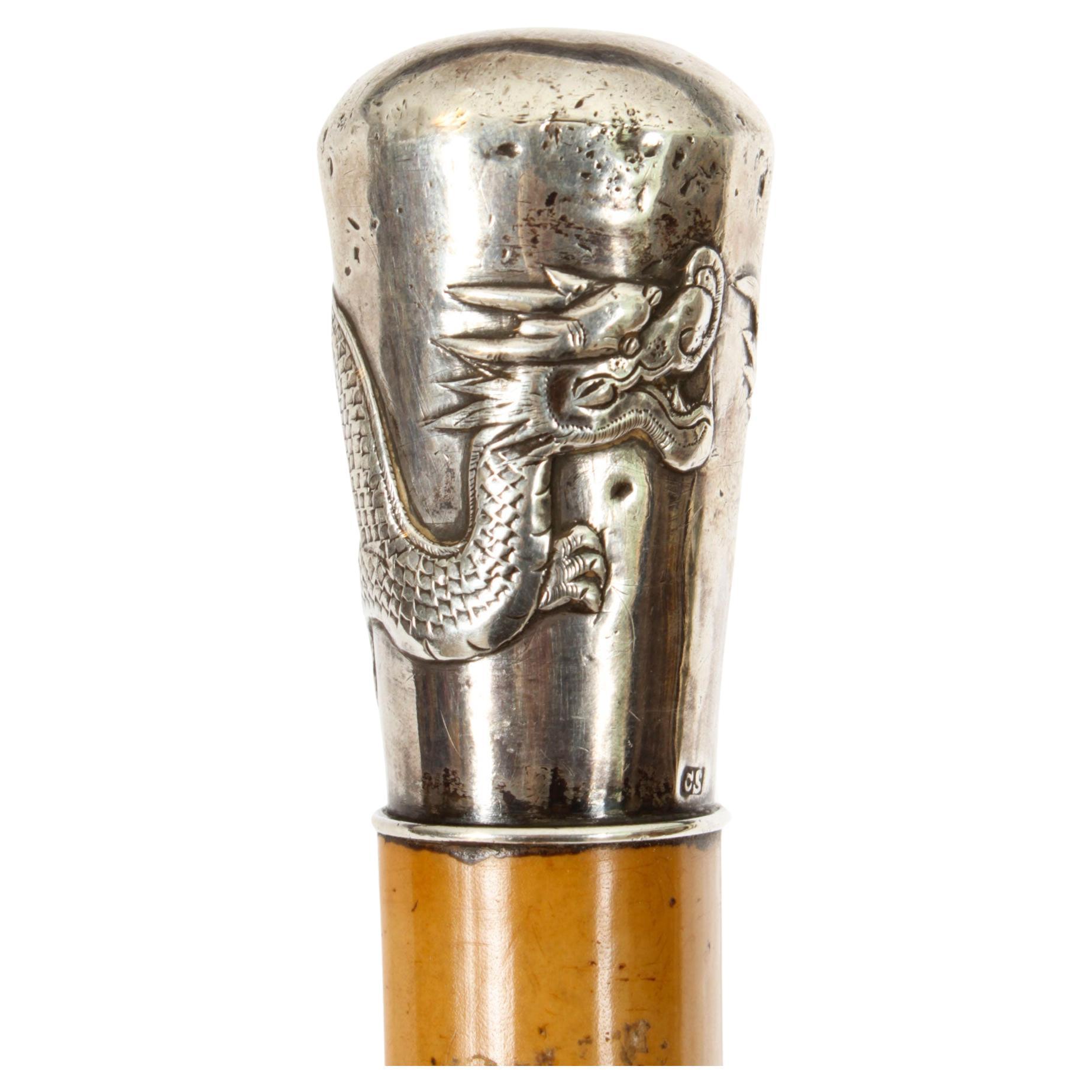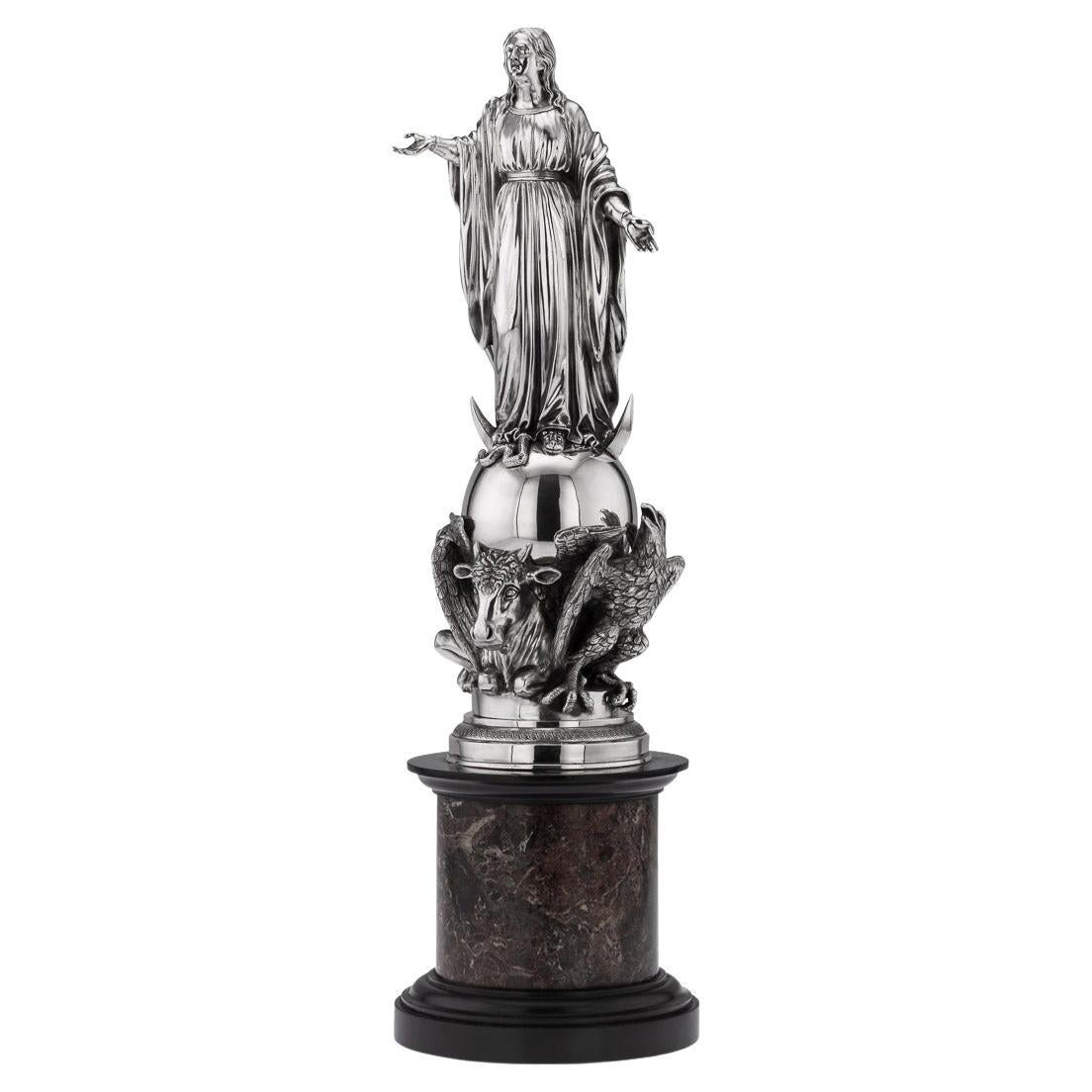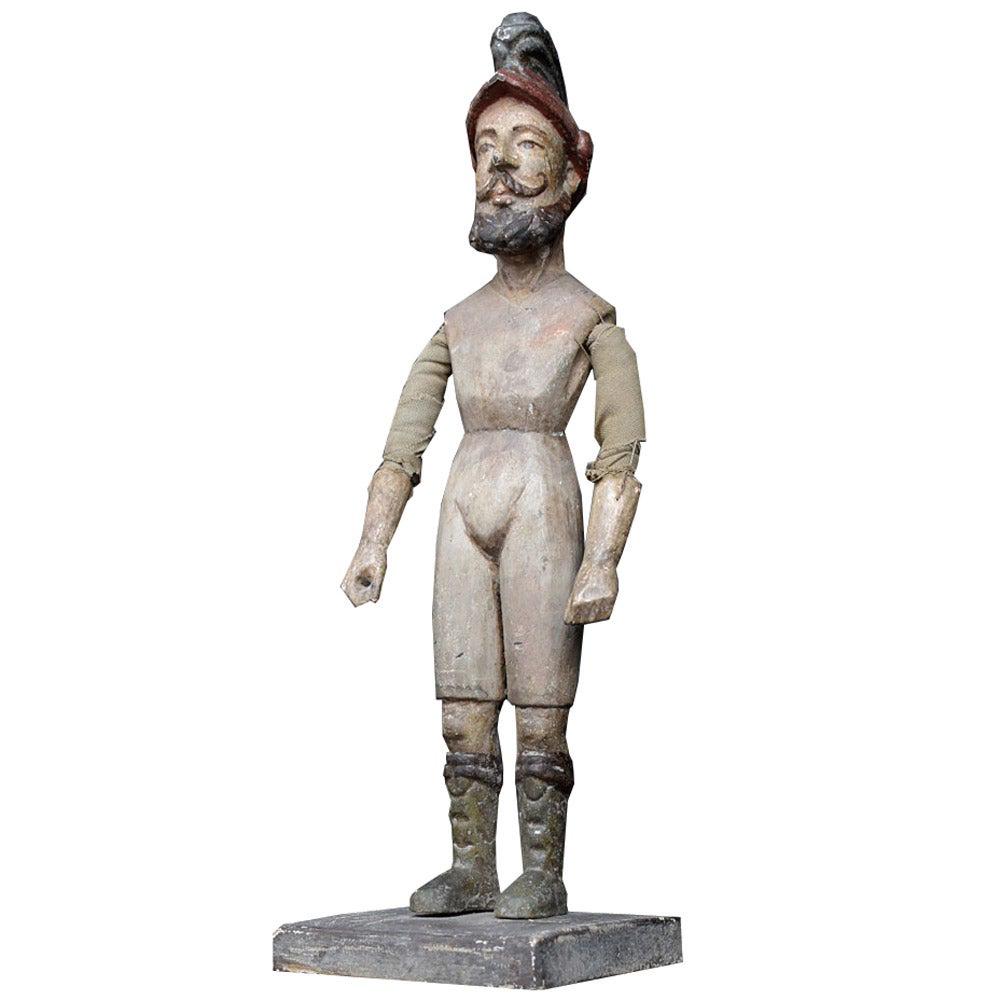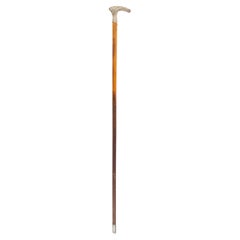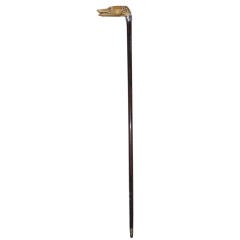
19th cent. figural ivory, rosewood and silver cane
View Similar Items
1 of 8
19th cent. figural ivory, rosewood and silver cane
About the Item
- Dimensions:Height: 34 in (86.36 cm)Depth: 5 in (12.7 cm)
- Place of Origin:
- Period:
- Date of Manufacture:Late 19th century
- Condition:an age related and to be expected shrinkage to the top of the head, the sterling silver ring is dinged up and there are minor scuffs to the finish on the rosewood shaft. Overall, good age appropriate condition.
- Seller Location:Sleepy Hollow, NY
- Reference Number:1stDibs: U1003238421769
You May Also Like
- 19th Century English Victorian Wood and Silver CaneLocated in New York, NYEnglish Victorian light wood cane with silver fluted design handle with hallmarks at base.Category
Antique Late 19th Century Victorian Sports Equipment and Memorabilia
MaterialsSilver
- Antique Silver & Malacca Walking Stick Cane, 19th CenturyLocated in London, GBThis is a beautiful antique gentleman's silver pommel and bambo shaft walking stick, circa 1880 in date. This decorative walking cane features an exquisite silver pommel decorate...Category
Antique 1880s Sports Equipment and Memorabilia
MaterialsSilver
- Antique Napoleon Bonaparte Silver Walking Stick Cane 19th CenturyLocated in London, GBThis is a beautiful antique gentleman's Napoleon Bonaparte silver plate pommel and ebonzed walking stick, circa 1840 in date. This novelty walking stick reflecting the Napoleonic Wars and the Cult of Napoleon Bonaparte, the pommel features a hinged cover enclosing a sprung mechanism revealing Napoleon rising from his coffin, dressed in full military uniform and in iconic pose, inscribed "Il N’est Plus" (He is no longer), with a hardwood cane. Add an extravagant element to your daily life with this wonderful walking cane. Condition: In excellent condition, please see photos for confirmation. Dimensions in cm: Height 86 x Width 35 x Depth 35 Dimensions in inches: Height 2 foot, 10 inches x Width 1 foot, 2 inches x Depth 1 foot, 2 inches Walking Stick used by many people to facilitate balancing while walking. Walking sticks come in many shapes and sizes, and can be sought by collectors. The walking stick has also historically been known to be used as a defensive or offensive weapon, and may conceal a knife or sword as in swordsticks. Around the 17th or 18th century, a stout rigid stick took over from the sword as an essential part of the European gentleman's wardrobe, used primarily as a walking stick. In addition to its value as a decorative accessory, it also continued to fulfill some of the function of the sword as a weapon. The standard cane was rattan with a rounded metal grip. There were very often made of malacca (rattan stems) and showed the patina of age. Types of walking sticks: Ashplant — an Irish walking stick made from the ash tree Devil's walking stick — made from Hercules plant Shooting stick — it can fold out into a single-legged seat Supplejack — made from a tropical American vine, also serves as a cane Penang lawyer — made from Licuala. After the bark was removed with only a piece of glass, the stick was straightened by fire and polished. The fictional Dr. Mortimer owned one of these in The Hound of the Baskervilles Makila (or makhila) — Basque walking stick or Staff, usually made from medlar wood. It often features a gold or silver foot and handle, which may conceal a steel blade. The Makila's elaborate engravings are actually carved into the living wood, then allowed to heal before harvesting. Kebbie — a rough Scottish walking stick...Category
Antique 1840s French Sports Equipment and Memorabilia
MaterialsSilver
- 19th Century Lay FigureLocated in Arundel, GBRare, artist's wooden lay figure. With articulated joints and intricately carved facial detail. England, circa 1860.Category
Antique 19th Century English Models and Miniatures
MaterialsPine
$13,246 - 19th Century German Silver Ecclesiastical Figure of Sankt PeterLocated in West Palm Beach, FLAntique loth silver ecclesiastical figure of Sankt Peter, holding a book and keys standing 6.75" high, Hallmarked with a blank elliptical mark, "N" (Nurnberg?), topiary style mark...Category
Antique 19th Century German Religious Items
MaterialsSilver
$1,760 Sale Price20% Off - 19th Century Tobacco advertising figureLocated in London, GB19th Century Tobacco advertising figure A rare example of a late 19th Century hand carved tobacco shop advertising figure in the form of an Arab gentleman. This fragment is mounted ...Category
Antique 19th Century British Early Victorian Tobacco Accessories
MaterialsWood
Recently Viewed
View AllMore Ways To Browse
Ivory Handle Sterling
Antique Ivory Ring
Ivory Dog
Antique Glass Walking Canes
Dog Cane
English Walking Canes
Sterling Silver Dog Ring
Walking Cane Dog
Midcentury Coat
Antique Coat
Coat Stand Used
Vintage 1970s Collectables
Vintage 1970s Collectibles
Vintage 1970s Collectables 1970s
Antique Queen
Bedside Tables Used
Bedside Table Used
Retro Art Collectibles
